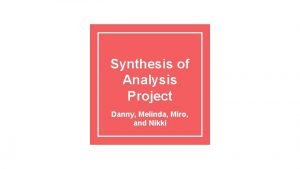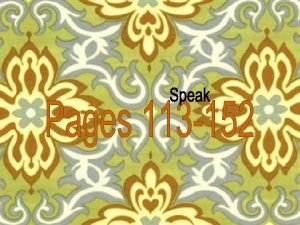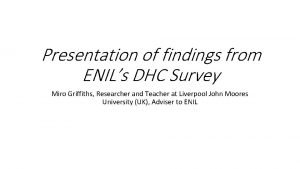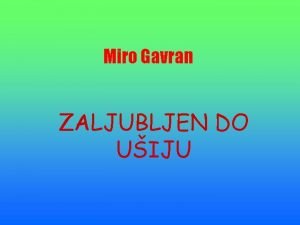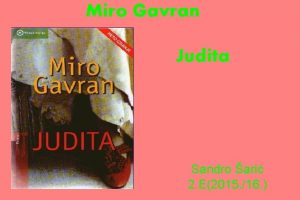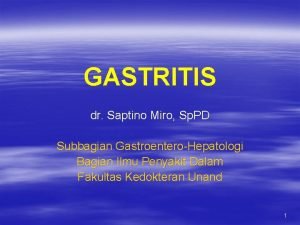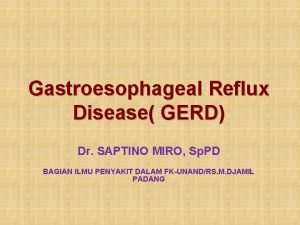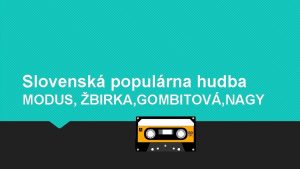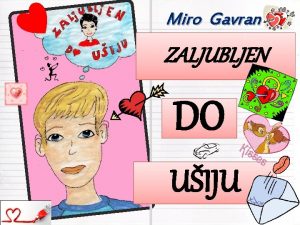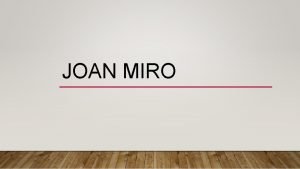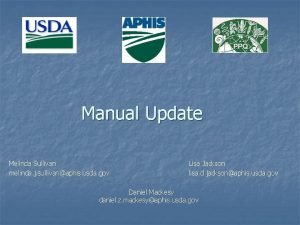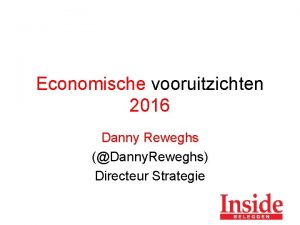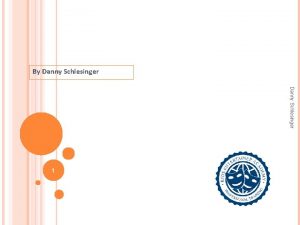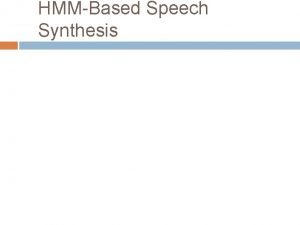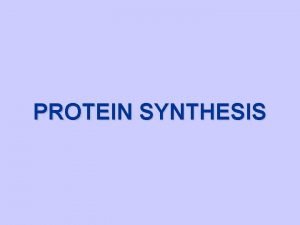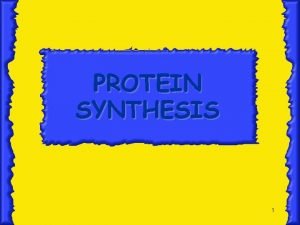Synthesis of Analysis Project Danny Melinda Miro and











- Slides: 11

Synthesis of Analysis Project Danny, Melinda, Miro, and Nikki

Teachers We Observed Dr. Laura Howard is the Online Coordinator of English and a Lecturer at KSU. Masters Degree, English Literature from Auburn University. Ph. D. in English Rhetoric and Composition from Georgia State University. Dr. Amy F. Sandefur received her undergraduate degree in English as well as a teaching certificate for 7 th- 12 th grade. Earned her Ph. D. from Louisiana State University in Southern Literature. Currently teaches three English 1101 courses and a World Literature course at KSU. Dr. Sarah Creel got her Undergrad and Masters at The University of Montevallo. Doctorate at Simon Fraser University in Vancouver in 18 th Century British Literature. Has been teaching for 12 years in higher education; started in 2007. Dr. Molly Livingston got her undergraduate degree in English from Oglethorpe University. She started out by getting her master’s degree as a way to get a job. After teaching a few semesters of high school language arts, she figured out that she had a passion for education. She eventually went on to get her PHD, and began to teach at the college level.

Teaching Philosophies Dr. Howard wants students to understand the value of writing and of the humanities as a whole. She teaches to try to show students the importance writing will have in both their personal and civic lives. Dr. Sandefur utilizes a student-centered teaching philosophy and believes in a discovery-based approach where students learn through hands-on experience. Dr. Creel follows the Student Development Theory (Sanford). Dr. Livingston says that “The business of the English classroom is to teach students to be effective analyzers and producers of meaning. As meaning is produced through critical thinking and effective communication. ”

Common Threshold Concepts Writing is a social and rhetorical activity (1. 0). All writers have more to learn (4. 0). Writing is linked to identity (3. 1) Writing addresses, invokes, and/or creates audiences (1. 2) Revision is central to developing writing (4. 4). All writing is multimodal (2. 4).

Dr. Howard: Threshold Concepts in Action Writing is a Social and Rhetorical Activity (1. 0): “Before each major assignment is due, peer reviews will be required” (Howard). Peer review counts for 25 percent of the student’s final grade. This portion of the syllabus also expresses the concept of Revision is Central to Developing Writing (4. 4). Writing is Linked to Identity (3. 1): The first major assignment to be completed in Dr. Howard’s class is a narrative essay. All Writers Have More to Learn (4. 0): “The KSU Writing Center works with writers from all disciplines, levels of ability, and stages of writing” (Howard). Writing Addresses, Invokes, and/or Creates Audiences (1. 2): “For major assignment #3, write an open letter employing collaborative rhetoric addressed to a specific person, either someone you know, someone you have heard deliver a speech, or the author of an article that has disturbed you” (Howard).

Dr. Amy Sandefur: Threshold Concepts in Action Writing is a Social and Rhetorical Activity (1. 0): “Program goal: Practice the social aspects of the writing process by critiquing your own work and the work of your colleagues” (Sandefur). All Writing is Multimodal (2. 4): “ … students will create a Prezi (that will self-play online) that puts forth a definition argument. Definition arguments argue that something does or does not fit a debatable category/definition” (Sandefur). All Writers Have More to Learn (4. 0): “Students of all writing abilities will benefit from the KSU writing center, a free service for the entire KSU community” (Sandefur). Revision is Central to Developing Writing (4. 4): “Research shows that engaging in peer review frequently throughout all stages of the writing process (when you are coming up with topics, planning, drafting and revising) is highly valuable” (Sandefur).

Dr. Creel: Threshold Concepts in Action All Writing Is Multimodal (2. 4): “Social Activism Project (Multi-media). Our largest assignment for this course will be a 4 -5 page (typed, double-spaced) researched social activism essay worth 15% of your final grade. ” Learning to Write Effectively Requires Different Kinds of Practice, Time, and Effort (4. 3): “You will revise each of the three major assignments for this course (narrative, rhetorical analysis, and social activism project) according to peer reviews and my feedback. ” Writing Speaks to Situations through Recognizable Forms (2. 0): “This course is designed to increase the student’s ability to effectively analyze arguments (both visual and written) and to construct successful written arguments. ” Writing Is a Social and Rhetorical Activity (1. 0): “Readings will consider issues of contemporary social and cultural concern, and students will develop analytical and argumentative skills, as well as their own rhetorical techniques, by composing a final portfolio based on a relevant social issue that affects their communities. ”

Dr. Livingston: Threshold Concepts in Action Writing is a Social and Rhetorical Activity (1. 0): The purpose of Dr. Livingston’s assignments is not only to use rhetorical strategies to appeal to “hostile” audiences, but are also billed as a way for us to understand each other better as people and gain the ability to have productive conversations with those that differ from us. All writers have more to learn (4. 0): Dr. Livingston encourages her students to visit the writing center in her syllabus, and even offers extra credit for attending workshops run by the writing center. All writing is multimodal (2. 4): While all of her projects are not strictly multimodal, Dr. Livingston’s projects all build on one another, culminating in a final PSA video project, therefore encouraging multimodality.

Scaffolding Analysis ● ● Dr. Sandefur utilizes scaffolding assignments throughout the course as a means of low-stakes to high-stakes learning/grading. “ … you will draft, review, and get feedback on multiple small assignments along the way to finishing a major assignment. This way, you'll not only get practice, but you'll also have the benefit of getting timely feedback at optimum times when you have the time (and likely the motivation) to make revision decisions that will move you towards a more effective piece of writing (and a better grade!). ” Dr. Howard scaffolds throughout the semester through the major assignments she gives her students. The first assignment is a narrative argument assignment. This gets students thinking about how to use evidence in writing through their own experiences. The second major assignment is a rhetorical analysis. Now, the students can build upon their knowledge of using evidence in different ways and by thinking more critically about their evidence and the arguments they are creating. The last major assignment is an open-letter that employs rhetorical strategies and thinking about our own identities.

Scaffolding Analysis Cont. ● ● Dr. Creel uses scaffolding throughout, but especially in her Social Activism Project. Total project is worth 20% of the course grade. The project is then broke down into these points: Project Proposal (2. 5%), Group Conference (2. 5%), and Social Activism Project (15%). The final project then is broken down into five parts: Presentation as a whole: is it persuasive? (2. 5%), Your role in the presentation (2. 5%), Viability of the problem (2. 5%), Efficacy of the solution (2. 5%), and Use & effectiveness of visuals, including a works cited page (5%). Having an evaluation method like this gives more of a range of skills that need to be used by the group members Dr. Livingston makes sure that all of her assignments build on each other, scaffolding throughout the semester. All of her assignments focus on using rhetorical strategy to have a conversations with “hostile” audiences. Students first write a proposal in which they give a controversial topic and identify the rhetorical situation. In their second paper, the students must persuade their hostile audience to their point of view. In the third paper, students must rhetorically analyze a counterargument to their point. For their last assignment, students will make a PSA video to demonstrate that they can use their rhetorical strategies in a different medium.

Takeaways Threshold concepts are not just theoretical frameworks, but are valid concepts that can and should be incorporated in English 1101 and 1102 courses Evaluating student work is imperative to the learning process as well as providing opportunities for revision to learn from “mistakes; ” this provides growth opportunity Digital technology has changed how students learn and the multimodal facets of writing must be adapted in the classroom for comprehensive learning. As a FYC new instructor, follow the advice of the threshold concepts! REVISION is KEY when it comes to designing your own syllabus and assignments; AKA: learn from your mistakes and ask for help when needed!
